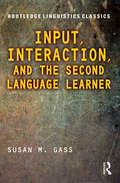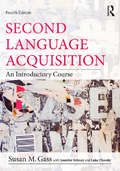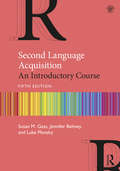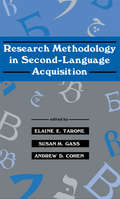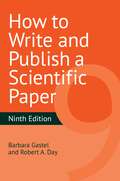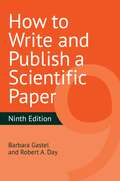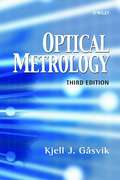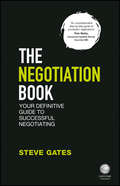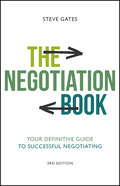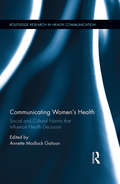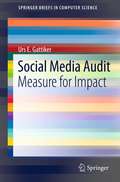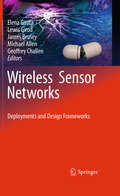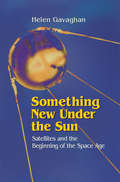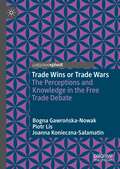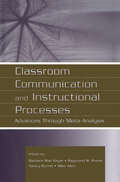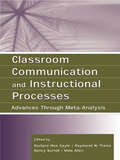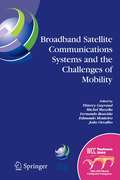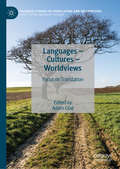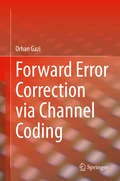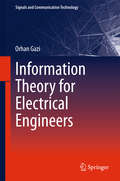- Table View
- List View
Input, Interaction, and the Second Language Learner: Second Edition (Routledge Linguistics Classics)
by Susan M. GassTwenty years after its first publication, Susan M. Gass’s Input, Interaction, and the Second Language Learner has become a classical text in the field of second language acquisition (SLA). This new printing includes the original text, along with a new preface that comprises individual consultations between the author and Alison Mackey, Rod Ellis, and Mike Long on the importance of the project two decades later. The volume provides an important view of the relationship between input, interaction, and SLA. In so doing, it should prove useful to those whose major concern is with the acquisition of a second or foreign language, as well as those who are primarily interested in these issues from a pedagogical perspective. The book does not explicate or advocate a particular teaching methodology, but does attempt to lay out some of the underpinnings of what is involved in interaction—what interaction is and what purpose it serves. Research in SLA is concerned with the knowledge that second language learners do and do not acquire, and how that knowledge comes about. This book ties these issues together from three perspectives: the input/interaction framework, information-processing, and learnability. This Routledge Linguistics Classic remains a key text for all SLA scholars and an essential supplementary volume for students on SLA courses.
Second Language Acquisition: An Introductory Course
by Susan M. GassNow in a fourth edition, this bestselling introductory textbook remains the cornerstone volume for the study of second language acquisition (SLA). Its chapters have been fully updated, and reorganized where appropriate, to provide a comprehensive yet accessible overview of the field and its related disciplines. To reflect current developments, new sections on using learner corpora, semantics and morphosyntax (within formal approaches to SLA), sociocultural approaches, gesture, priming research, and chaos theory have been added. Students will also find expanded discussions of heritage language learning, bilingualism, pragmatics, and much more. The redesigned fourth edition of Second Language Acquisition retains the features that students found useful in the current edition but also provides new pedagogical tools that encourage students to reflect upon the experiences of second language learners. As with previous editions, discussion questions and problems at the end of each chapter help students apply their knowledge, and a glossary defines and reinforces must-know terminology. This clearly-written, comprehensive, and current textbook, by expert Sue Gass, is the ideal textbook for the introductory SLA course in second language studies, applied linguistics, linguistics, TESOL, and language education programs.
Second Language Acquisition: An Introductory Course
by Susan M. GassNow in a fourth edition, this bestselling introductory textbook remains the cornerstone volume for the study of second language acquisition (SLA). Its chapters have been fully updated, and reorganized where appropriate, to provide a comprehensive yet accessible overview of the field and its related disciplines. To reflect current developments, new sections on using learner corpora, semantics and morphosyntax (within formal approaches to SLA), sociocultural approaches, gesture, priming research, and chaos theory have been added. Students will also find expanded discussions of heritage language learning, bilingualism, pragmatics, and much more. The redesigned fourth edition of Second Language Acquisition retains the features that students found useful in the current edition but also provides new pedagogical tools that encourage students to reflect upon the experiences of second language learners. As with previous editions, discussion questions and problems at the end of each chapter help students apply their knowledge, and a glossary defines and reinforces must-know terminology. This clearly-written, comprehensive, and current textbook, by expert Sue Gass, is the ideal textbook for the introductory SLA course in second language studies, applied linguistics, linguistics, TESOL, and language education programs.
Second Language Acquisition: An Introductory Course
by Susan M. Gass Jennifer Behney Luke PlonskyNow in a fifth edition, this bestselling introductory textbook remains the cornerstone volume for the study of second language acquisition (SLA). Its chapters have been fully updated, and reorganized where appropriate, to provide a comprehensive yet accessible overview of the field and its related disciplines. In order to reflect current developments, new sections and expanded discussions have been added. The fifth edition of Second Language Acquisition retains the features that students found useful in previous editions. This edition provides pedagogical tools that encourage students to reflect upon the experiences of second language learners. As with previous editions, discussion questions and problems at the end of each chapter help students apply their knowledge, and a glossary defines and reinforces must-know terminology. This clearly written, comprehensive, and current textbook, by Susan Gass, Jennifer Behney, and Luke Plonsky, is the ideal textbook for an introductory SLA course in second language studies, applied linguistics, linguistics, TESOL, and/or language education programs.
Research Methodology in Second-Language Acquisition (Second Language Acquisition Research Series)
by Susan M. Gass Andrew D. Cohen Elaine E. TaroneThis volume addresses salient theoretical issues concerning the validity of research methods in second-language acquisition, and provides critical analysis of contextualized versus sentence-level production approaches. The contributors present their views of competence versus performance, the nature of language acquisition data, research design, the relevance of contextualized data collection and interpretation, and the desirability of a particularistic nomothetic theoretical paradigm versus more comprehensive consideration of multiple realities and complex influencing factors. This book presents varying and antithetical approaches to the issues, bringing together the thinking and approaches of leading researchers in language acquisition, language education, and sociolinguistics in an engaging debate of great currency in the field.
How to Write and Publish a Scientific Paper
by Barbara Gastel Robert A. DayThoroughly updated throughout, this classic, practical text on how to write and publish a scientific paper takes its own advice to be "as clear and simple as possible.""The purpose of scientific writing," according to Barbara Gastel and Robert A. Day, "is to communicate new scientific findings. Science is simply too important to be communicated in anything other than words of certain meaning."This clear, beautifully written, and often funny text is a must-have for anyone who needs to communicate scientific information, whether they're writing for a professor, other scientists, or the general public. The thoughtfully revised 9th edition retains the most important material-including preparing text and graphics, publishing papers and other types of writing, and plenty of information on writing style-while adding up-to-date advice on copyright, presenting online, identifying authors, creating visual abstracts, and writing in English as a non-native language.A set of valuable appendixes provide ready reference, including words and expressions to avoid, SI prefixes, a list of helpful websites, and a glossary. Students and working scientists will want to keep How to Write and Publish a Scientific Paper at their desks and refer to it at every stage of writing and publication.
How to Write and Publish a Scientific Paper
by Barbara Gastel Robert A. DayThoroughly updated throughout, this classic, practical text on how to write and publish a scientific paper takes its own advice to be "as clear and simple as possible.""The purpose of scientific writing," according to Barbara Gastel and Robert A. Day, "is to communicate new scientific findings. Science is simply too important to be communicated in anything other than words of certain meaning."This clear, beautifully written, and often funny text is a must-have for anyone who needs to communicate scientific information, whether they're writing for a professor, other scientists, or the general public. The thoughtfully revised 9th edition retains the most important material-including preparing text and graphics, publishing papers and other types of writing, and plenty of information on writing style-while adding up-to-date advice on copyright, presenting online, identifying authors, creating visual abstracts, and writing in English as a non-native language.A set of valuable appendixes provide ready reference, including words and expressions to avoid, SI prefixes, a list of helpful websites, and a glossary. Students and working scientists will want to keep How to Write and Publish a Scientific Paper at their desks and refer to it at every stage of writing and publication.
Optical Metrology
by Kjell J. GåsvikNew material on computerized optical processes, computerized ray tracing, and the fast Fourier transform, Bibre-Bragg sensors, and temporal phase unwrapping. * New introductory sections to all chapters. * Detailed discussion on lasers and laser principles, including an introduction to radiometry and photometry. * Thorough coverage of the CCD camera.
The Negotiation Book: Your Definitive Guide to Successful Negotiating
by Steve GatesWinner! - CMI Management Book of the Year 2017 – Practical Manager category Master the art of negotiation and gain the competitive advantage Now revised and updated, the second edition of The Negotiation Book will teach you about one of the most important skills in business. We all have to negotiate at some point; whether in the office or at home and good negotiation skills can have a profound effect on our lives – both financially and personally. No other skill will give you a better chance of optimizing your success and your organization's success. Every time you negotiate, you are looking for an increased advantage. This book delivers it, whilst ensuring the other party also comes away feeling good about the deal. Nothing will put you in a stronger position to build capacity, build negotiation strategies and facilitate negotiations through to successful conclusions. The Negotiation Book: Explains the importance of planning, dynamics and strategies Will help you understand the psychology, tactics and behaviours of negotiation Teaches you how to conduct successful win-win negotiations Gives you the competitive advantage
The Negotiation Book: Your Definitive Guide to Successful Negotiating
by Steve GatesWinner! - CMI Management Book of the Year 2017 – Practical Manager category Master the art of negotiation and gain the competitive advantage Now revised and updated, the second edition of The Negotiation Book will teach you about one of the most important skills in business. We all have to negotiate at some point; whether in the office or at home and good negotiation skills can have a profound effect on our lives – both financially and personally. No other skill will give you a better chance of optimizing your success and your organization's success. Every time you negotiate, you are looking for an increased advantage. This book delivers it, whilst ensuring the other party also comes away feeling good about the deal. Nothing will put you in a stronger position to build capacity, build negotiation strategies and facilitate negotiations through to successful conclusions. The Negotiation Book: Explains the importance of planning, dynamics and strategies Will help you understand the psychology, tactics and behaviours of negotiation Teaches you how to conduct successful win-win negotiations Gives you the competitive advantage
The Negotiation Book: Your Definitive Guide to Successful Negotiating
by Steve GatesBecome the best negotiator you can be, one manageable step at a time In the newly updated third edition of The Negotiation Book: Your Definitive Guide to Successful Negotiating, distinguished commercial negotiator Steve Gates delivers a singular and practical guide to the art and science of negotiation. Steve Gates is the founder of the world’s leading negotiation consultancy, The Gap Partnership – and the methodology in this book is used by the world’s biggest businesses to successfully execute their strategies. The book lays out the behaviours and traits associated with successful negotiation and offers a comprehensive model for how power, process and behaviour can have substantial impacts on your next negotiation. You’ll also learn how you can shape these factors to optimise value for yourself, your client or your organisation. The author shows you how to secure more agreements and realise more value with every agreement you conclude. Through simple, realistic and hands-on advice, you’ll improve as a negotiator and apply straightforward techniques to the real-world, dynamic environments in which your negotiations take place. You’ll also find: Strategies for maintaining a balanced perspective and keeping your ego in check Maintaining a focus on the interests and priorities of the other party/parties Incremental steps for improving your negotiation ability that are easy to apply and retain This third edition brings the book firmly into the zeitgeist as it considers the very modern challenges presented to commercial negotiators as a result of an ever-changing world, in which they must navigate technological advancements, the post-Covid reality of virtual negotiation, and the impact of war, Brexit and other macro-economic and political developments that are having far-reaching impacts to business and beyond. An invaluable roadmap to becoming a Complete Skilled Negotiator, The Negotiation Book is the negotiation playbook that business leaders, lawyers, consultants and other professionals have been waiting for.
The Negotiation Book: Your Definitive Guide to Successful Negotiating
by Steve GatesBecome the best negotiator you can be, one manageable step at a time In the newly updated third edition of The Negotiation Book: Your Definitive Guide to Successful Negotiating, distinguished commercial negotiator Steve Gates delivers a singular and practical guide to the art and science of negotiation. Steve Gates is the founder of the world’s leading negotiation consultancy, The Gap Partnership – and the methodology in this book is used by the world’s biggest businesses to successfully execute their strategies. The book lays out the behaviours and traits associated with successful negotiation and offers a comprehensive model for how power, process and behaviour can have substantial impacts on your next negotiation. You’ll also learn how you can shape these factors to optimise value for yourself, your client or your organisation. The author shows you how to secure more agreements and realise more value with every agreement you conclude. Through simple, realistic and hands-on advice, you’ll improve as a negotiator and apply straightforward techniques to the real-world, dynamic environments in which your negotiations take place. You’ll also find: Strategies for maintaining a balanced perspective and keeping your ego in check Maintaining a focus on the interests and priorities of the other party/parties Incremental steps for improving your negotiation ability that are easy to apply and retain This third edition brings the book firmly into the zeitgeist as it considers the very modern challenges presented to commercial negotiators as a result of an ever-changing world, in which they must navigate technological advancements, the post-Covid reality of virtual negotiation, and the impact of war, Brexit and other macro-economic and political developments that are having far-reaching impacts to business and beyond. An invaluable roadmap to becoming a Complete Skilled Negotiator, The Negotiation Book is the negotiation playbook that business leaders, lawyers, consultants and other professionals have been waiting for.
Communicating Women's Health: Social and Cultural Norms that Influence Health Decisions (Routledge Research in Health Communication)
by Annette Madlock GatisonThis volume explores the conditions under which women are empowered, and feel entitled, to make the health decisions that are best for them. At its core, it illuminates how the most basic element of communication, voice, has been summarily suppressed for entire groups of women when it comes to control of their own sexuality, reproductive lives, and health. By giving voice to these women’s experiences, the book shines a light on ways to improve health communication for women. Bringing together personal narratives, key theory and literature, and original qualitative and quantitative studies, the book provides an in-depth comparative picture of how and why women’s health varies for distinct groups of women. Organized into four parts—historical influences on patient and provider perceptions, breast cancer the silence and the shame, make it taboo: mothering, reproduction, and womanhood, and sex, sexuality, relational health, and womanhood—each section is introduced with a brief synthesis and discussion of the key questions addressed across the chapters.
Communicating Women's Health: Social and Cultural Norms that Influence Health Decisions (Routledge Research in Health Communication)
by Annette Madlock GatisonThis volume explores the conditions under which women are empowered, and feel entitled, to make the health decisions that are best for them. At its core, it illuminates how the most basic element of communication, voice, has been summarily suppressed for entire groups of women when it comes to control of their own sexuality, reproductive lives, and health. By giving voice to these women’s experiences, the book shines a light on ways to improve health communication for women. Bringing together personal narratives, key theory and literature, and original qualitative and quantitative studies, the book provides an in-depth comparative picture of how and why women’s health varies for distinct groups of women. Organized into four parts—historical influences on patient and provider perceptions, breast cancer the silence and the shame, make it taboo: mothering, reproduction, and womanhood, and sex, sexuality, relational health, and womanhood—each section is introduced with a brief synthesis and discussion of the key questions addressed across the chapters.
Social Media Audit: Measure for Impact (SpringerBriefs in Computer Science)
by Urs E. GattikerSocial media has drastically improved the way we can reach target audiences and serve our customers. Like its financial counterpart, the social media audit (SMA) can be described as a formalized review of anorganization's social media activities. However, contrary to financial audits, social media audits are not guided by government regulations or a set of professional rules and standards. This book will address social media marketing issues using a cost benefit approach, while presenting a systematic approach to review the organization's social media activities. Using the checklists and templates provided in this book will enable readers to conduct an audit that helps identify target areas for performance improvement and recommendations for how to achieve these objectives. Social media platforms discussed include: Facebook, LinkedIn, Google Plus, Twitter, Tumblr, and Xing.
Wireless Sensor Networks: Deployments and Design Frameworks
by Elena Gaura Michael Allen James Brusey Geoffrey Challen Lewis GirodThe twentieth century ended with the vision of smart dust: a network of wirelessly connected devices whose size would match that of a dust particle, each one a se- containedpackageequippedwithsensing,computation,communication,andpower. Smart dust held the promise to bridge the physical and digital worlds in the most unobtrusive manner, blending together realms that were previously considered well separated. Applications involved scattering hundreds, or even thousands, of smart dust devices to monitor various environmental quantities in scenarios ranging from habitat monitoring to disaster management. The devices were envisioned to se- organize to accomplish their task in the most ef?cient way. As such, smart dust would become a powerful tool, assisting the daily activities of scientists and en- neers in a wide range of disparate disciplines. Wireless sensor networks (WSNs), as we know them today, are the most no- worthy attempt at implementing the smart dust vision. In the last decade, this ?eld has seen a fast-growing investment from both academia and industry. Signi?cant ?nancial resources and manpower have gone into making the smart dust vision a reality through WSNs. Yet, we still cannot claim complete success. At present, only specialist computerscientists or computerengineershave the necessary background to walk the road from conception to a ?nal, deployed, and running WSN system.
Something New Under the Sun: Satellites and the Beginning of the Space Age
by Helen GavaghanIn this, the first history of artificial satellites and their uses, Helen Gavaghan shows how the idea of putting an object in orbit around the earth changed from science fiction to indispensable technology in the twinkling of an eye. Focusing on three major areas of development - navigational satellites, communications, and weather observation and forecasting - Gavaghan tells the remarkable inside story of how obscure men and women, often laboring under strict secrecy, made satellite technology possible."...a gripping read." -NEW SCIENTIST
Ad-Hoc Networking Towards Seamless Communications (Signals and Communication Technology)
by Liljana Gavrilovska Ramjee PrasadThis book reveals the state-of-the-art in wireless ad-hoc networking. It addresses many complex and open problems for researchers in the field of ad hoc networks. It further discusses some of the key research topics that are expected to promote and accelerate the commercial application of these networks (e.g., MAC, routing, QoS, optimization issues, service discovery, traffic models, mobility, handovers, security). It also presents "killer applications".
Trade Wins or Trade Wars: The Perceptions and Knowledge in the Free Trade Debate
by Bogna Gawrońska-Nowak Piotr Lis Joanna Konieczna-SałamatinThis book tackles the disconnect between social perceptions and expert knowledge regarding trade policy decisions. Using a Polish language internet database, the authors shed light on areas that need to be addressed when considering the adoption of particular trade policies by applying content and statistical analysis to produce an easy to deploy measure of populism in digital media, the “Media Populism Ratio”. Defining a mismatch between social perception and expert knowledge may contribute to a better understanding of the controversies on free trade, as well as properly defining possible sources of populism and social conflicts – therefore also revealing some potential weaknesses in the trade policy implementation level which are at times neglected or underestimated. The book will be relevant to students and researchers interested in economic policy, economic narratives and cultural economics.
Classroom Communication and Instructional Processes: Advances Through Meta-Analysis
by Barbara Mae Gayle Raymond W. Preiss Nancy Burrell Mike AllenThis volume offers a systematic review of the literature on communication education and instruction. Making meta-analysis findings accessible and relevant, the editors of this volume approach the topic from the perspective that meta-analysis serves as a useful tool for summarizing experiments and for determining how and why specific teaching and learning experiences have positive student outcomes. The topics covered here are meaningful and relevant to classroom practice, and each chapter offers a summary of existing quantitative social science research using meta-analysis. With contributions from experienced researchers throughout the communication discipline, this work provides a unique analysis of research in instructional communication.Taken together, the chapters in this volume enhance understanding of behaviors, practices, and processes that promote positive student outcomes. This book is a must-read for scholars, graduate students, and researchers in communication education, and will also be of interest to scholars and researchers in education.
Classroom Communication and Instructional Processes: Advances Through Meta-Analysis
by Barbara Mae Gayle Raymond W. Preiss Nancy Burrell Mike AllenThis volume offers a systematic review of the literature on communication education and instruction. Making meta-analysis findings accessible and relevant, the editors of this volume approach the topic from the perspective that meta-analysis serves as a useful tool for summarizing experiments and for determining how and why specific teaching and learning experiences have positive student outcomes. The topics covered here are meaningful and relevant to classroom practice, and each chapter offers a summary of existing quantitative social science research using meta-analysis. With contributions from experienced researchers throughout the communication discipline, this work provides a unique analysis of research in instructional communication.Taken together, the chapters in this volume enhance understanding of behaviors, practices, and processes that promote positive student outcomes. This book is a must-read for scholars, graduate students, and researchers in communication education, and will also be of interest to scholars and researchers in education.
Broadband Satellite Communication Systems and the Challenges of Mobility: IFIP TC6 Workshops on Broadband Satellite Communication Systems and Challenges of Mobility, World Computer Congress August 22-27, 2004, Toulouse, France (IFIP Advances in Information and Communication Technology #169)
by Thierry Gayraud Joao Gilberto De Matos Orvalho Michel Mazella Fernando Pedro Lopes Boavida Fernandes Edmundo Heitor Da Silva MonteiroBroadband Satellite Communication Systems and the Challenges of Mobility is an essential reference for both academic and professional researchers in the field of telecommunications, computer networking and wireless networks. Recently the request of multimedia services has been rapidly increasing and satellite networks appear to be attractive for a fast service deployment and for extending the typical service area of terrestrial systems. In comparison with traditional wide area networks, a characteristic of satellite communication systems is their ability in broadcasting and multicasting multimedia information flows anywhere over the satellite coverage. The papers presented in this volume highlight key areas such as Satellite Network Architectures, Services and Applications; Mobile Satellite Systems and Services; and Hybrid Satellite and Terrestrial Networks. Mobility will inevitably be one of the main characteristics of future networks, terminals and applications and, thus, extending and integrating fixed network protocols and services to mobile systems represents one of the main issues of present networking. The secondary focus of this volume is on challenges of mobility, that is, on technologies, protocols and services for the support of seamless and nomadic user access to new classes of applications in person-to-person, device-to-device and device-to-person environments. The book comprises recent results of research and development in the following areas; Seamless mobility; Mobile ad hoc and sensor networks; Analysis, simulation and measurements of mobile and wireless systems; Integration and inter-working of wired and wireless networks; QoS in mobile and wireless networks; Future trends and issues concerning mobility. This state -of-the-art volume contains a collection of papers from two of the workshops of the 18th IFIP World Computer Congress, held August 22-27, 2004, in Toulouse, France: the Workshop on Broadband Satellite Communication Systems, and the Workshop on the Challenges of Mobility.
Languages – Cultures – Worldviews: Focus on Translation (Palgrave Studies in Translating and Interpreting)
by Adam GłazThis edited book explores languages and cultures (or linguacultures) from a translation perspective, resting on the assumption that they find expression as linguacultural worldviews. Specifically, it investigates how these worldviews emerge, how they are constructed, shaped and modified in and through translation, understood both as a process and a product. The book’s content progresses from general to specific: from the notions of worldview and translation, through a consideration of how worldviews are shaped in and through language, to a discussion of worldviews in translation, both in macro-scale and in specific details of language structure and use. The contributors to the volume are linguists, linguistic anthropologists, practising translators, and/or translation studies scholars, and the book will be of interest to scholars and students in any of these fields.
Forward Error Correction via Channel Coding
by Orhan GaziThis book provides a comprehensive explanation of forward error correction, which is a vital part of communication systems. The book is written in such a way to make the subject easy and understandable for the reader. The book starts with a review of linear algebra to provide a basis for the text. The author then goes on to cover linear block codes, syndrome error correction, cyclic codes, Galois fields, BCH codes, Reed Solomon codes, and convolutional codes. Examples are provided throughout the text.
Information Theory for Electrical Engineers (Signals and Communication Technology)
by Orhan GaziThis book explains the fundamental concepts of information theory, so as to help students better understand modern communication technologies. It was especially written for electrical and communication engineers working on communication subjects. The book especially focuses on the understandability of the topics, and accordingly uses simple and detailed mathematics, together with a wealth of solved examples.The book consists of four chapters, the first of which explains the entropy and mutual information concept for discrete random variables. Chapter 2 introduces the concepts of entropy and mutual information for continuous random variables, along with the channel capacity. In turn, Chapter 3 is devoted to the typical sequences and data compression. One of Shannon’s most important discoveries is the channel coding theorem, and it is critical for electrical and communication engineers to fully comprehend the theorem. As such, Chapter 4 solely focuses on it.To gain the most from the book, readers should have a fundamental grasp of probability and random variables; otherwise, they will find it nearly impossible to understand the topics discussed.
